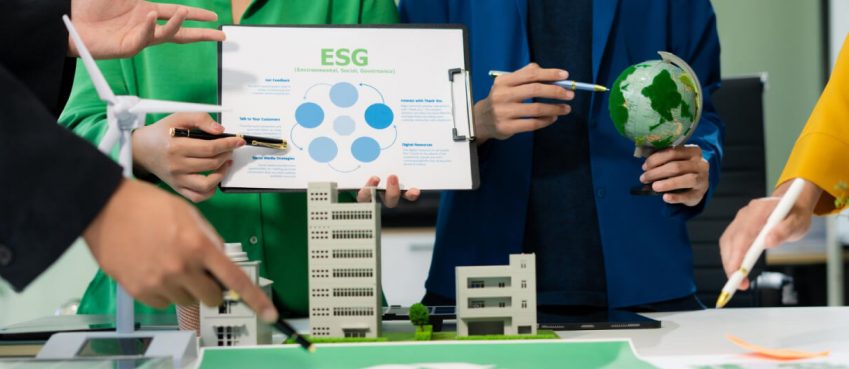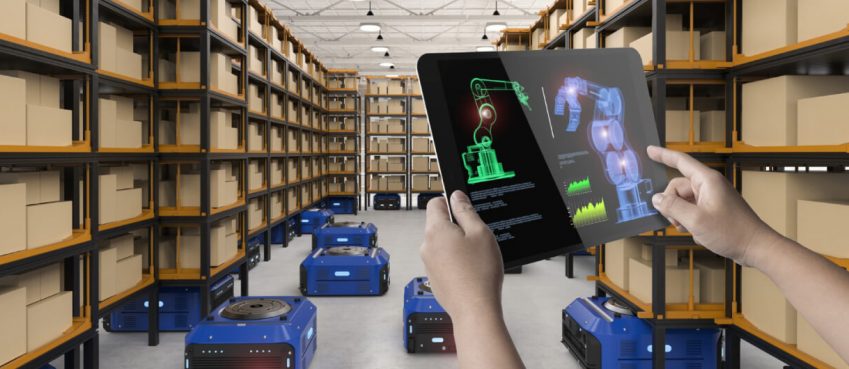
In shipping, the packing flow or packing station layout has a crucial impact on the successiveness of order shipment.
Also, an improved and optimized station setup ensures accuracy and speed, minimizing the risks and mistakes.
So, if your business doesn’t set up an optimal packing flow system, chances are that you are not meeting your fulfillment operations, efficiently and effectively.
This guide is for eCommerce, logistic owners, and shipping professionals to acknowledge the importance of station setup.
Some key points and principles:
- Dismantle rushing to pack orders, examine the fulfillment and approach effective implementation.
- Keep store order preparation materials in common place to facilitate quicker actions.
- Implement shipping automation procedure to track, tackle, and monitor order shipment.
Remember, the lesser the touches the more efficient your packing flow and station setup would be.
Also read: What Is DeepNude Undress AI Tool? A Complete Guide + Best Alternatives To AI Undress AppsTable of Contents
What Is Packing Flow In Shipping?
In shipping, packing flow refers to the series of operations of order packaging from storage, transportation, or distribution to generating a manifest, staging, and final quality checks.
This comes under the title of fulfillment process and it should be optimized according to the improved results achieved from station setup.
There is math when it comes to design packing flow based on the budget allocation and operations.
Businesses can consider to prevail most often station packing flow methods or either develop their own by screening the factors.
Types Of Packing Flow
When it comes to approaching packing flow in business, you have a wider selection of packing flow types to choose from.
Underneath are the briefly discussed of its types:
1. Batch Packing: This method involves grouping similar items together in lots before packing them into storage.
2. Zone Packing: Zone packing divides the packing area into different zones, with each zone designated for specific types of items or products.
3. Wave Packing: It is a different approach where items are packed in waves or batches according to a predetermined schedule.
4. Single Order Packing: This method involves packing one order at a time. It’s commonly used in scenarios where each order consists of unique items or customization.
5. Automated Packing: It is in the most current trend that uses robotics and automation technology to pack items quickly and efficiently.
Whatever you concern and choose packing flow types, ensure that it results in better outcomes while not increasing operational cost.
An effective packing station setup offers a number of benefits and have a great importance from the perspective of order shipment.
It generally facilitates an improved packing process with accuracy and speed. Along with effective stock allocation while minimizing risks of damage and poorer documentation.
Also packing stations with rightful setup indirectly help top-tier managers to plan more innovative products for the commodity.
Therefore, designing a flexible and versatile packing flow station could meet challenges product development and packing tasks greatly.
The importance of packaging station depends on the quality and quantity of equipment and tools in place.
Essential Packing Station Equipment and Tools
Deciding with tools for packing stations is another important aspect. It is because with the right equipment your station setup could handle weighted as well as handle any shipment promptly.
- Boxes, bubble wrap, packing peanuts, envelopes, labels, stationery, and void fill required for packaging items.
- Weigh scales, computers, printers, scanners, label printers, and barcode scanners for quality control tools.
- Heat sealer, stapler gun, glue, and scales for essential operations arise in time of urgency.
Once you have these in hand, you could start thinking of developing packing flow structure or layout.
7 Tips To Design Foolproof Shipping Station Layout
Adhere to the following seven important layout creation steps for foolproof shipping station development.
These tips don’t demand robust math calculation instead careful planning and scientific approach – to get better results.
1. Implement FI-FO System
First–In, First-Out (FI-FO) is a standard inventory management practice in which the initial items to enter a space are also the first to leave.
This layout idea is suitable for any product packaging innovation. With this system, employees are better focusing on the current state of packaging at hand.
2. Use Labeling Systems
Before shipping your order, do ensure that it’s labeled correctly. This is one of the most critical components of the packing process.
Labeling should be done in limits and consist of the right information patch on it. Additionally, put only-necessary information in the label.
3. Make Storage Allocation For Each Item
Indeed, a multitude of operations carried with a number of materials, tools, and equipment. It would be both convenient and flexible if you assign storage areas for each product.
By doing this it brings clarity and effective stock management. It also makes storage differentiation easier which prompts faster documentation preparation.
4. Optimize Workspace Layout
Do you agree that small ergonomic changes can make a huge difference in packaging station setup?
It could be and in most cases it comes out as helpful. Making a small change in floor layout could make a difference for your shipping and packaging areas.
Also it may unlock exposure for new tricks or new methods to implement in time for more improvement.
5. Implement Safety Measures
Packaging and safety measures go hand in hand. Giving importance on little to basic safety measures could result in increased productive work.
For example, solutions like water-activated tape can prompt faster work compared to traditional tape used for packaging.
Frequent checking and monitoring of workers could lead to improved creation of a safe and guarded environment.
6. Use Technology
Currently, many logistic companies and in-house manufacturing brands convey technologies for smooth packing flow.
This may include the use of wrap machines, conveyors, order fulfillment software, box forming, etc.
By evaluating your station setup, you could analyze for any falls points or improvement areas to consider what technology to use for optimal results.
7. Feedback From Working Professionals
Directly asking from the workers about any fail points, improvement or suggestions – is a brilliant way to bring improvement in the packing flow process.
Alternatively, you can draft some questions for them and ask them to provide answers accordingly. Later, evaluate those feedback and come up with a good procedure.
Questions To Ask
You can take the following questions as a survey for your packing flow processes. These questions aim to collect valuable information related to improvement, development, and innovation for packaging station flow.
In your opinion, what are the main bottlenecks or inefficiencies in the current packing flow process?
Have you encountered any specific issues or challenges that hinder the smooth flow of packing operations?
Are there any aspects of the packaging station flow process that you believe could be streamlined or optimized for greater efficiency?
How do you currently track and manage inventory during the packing process, and do you see any room for improvement in this area?
Have you noticed any opportunities for automation or technology integration that could enhance the packing flow process?
Are there any aspects of packaging materials or supplies that you feel could be improved to facilitate faster and more efficient packing?
What suggestions do you have for enhancing communication and coordination among packing team members to improve overall efficiency?
How do you handle variations in order volume or demand fluctuations, and do you have any ideas for improving adaptability in the packing flow process?
Have you received any feedback from customers regarding the packing quality or presentation of shipped orders, and how do you think this feedback could inform improvements?
Are there any best practices or innovative strategies from other industries or companies that you believe could be applied to improve the packaging station flow process in our organization?
Ending Notes
Packing flow is an important stage in order shipment.
It must be designed and developed to achieve smooth flow of packing operations while keeping other essential things in mind such as optimum utilization of floor, robust layout to meet unique product packing, and safety measures.
Each product may have different shapes, sizes, fragility levels, and packing requirements.
So tailoring the layout to accommodate these variations can significantly improve the overall packing flow process.
Also read: How to choose The Perfect Domain NameFrequently Asked Questions
What is packing flow, and why is it important?
Packing flow refers to the systematic arrangement and organization of packing stations and processes to efficiently pack and ship products.
What factors should be considered when designing a packing flow layout?
There are many factors to consider such as product size, shape, fragility, packing materials, and order volume.
How can technology be integrated into packing flow setup to improve efficiency?
With help of barcode scanners, label printers, and packing software can streamline packing processes, reduce errors, and provide real-time tracking of orders.
How can I measure the effectiveness of my packing flow setup?
Key performance indicators (KPIs) such as packing time per order, packing accuracy rate, and order fulfillment lead time.
Top 10 News
-
01
Top 10 Deep Learning Multimodal Models & Their Uses
Tuesday August 12, 2025
-
02
10 Google AI Mode Facts That Every SEOs Should Know (And Wha...
Friday July 4, 2025
-
03
Top 10 visionOS 26 Features & Announcement (With Video)
Thursday June 12, 2025
-
04
Top 10 Veo 3 AI Video Generators in 2025 (Compared & Te...
Tuesday June 10, 2025
-
05
Top 10 AI GPUs That Can Increase Work Productivity By 30% (W...
Wednesday May 28, 2025
-
06
[10 BEST] AI Influencer Generator Apps Trending Right Now
Monday March 17, 2025
-
07
The 10 Best Companies Providing Electric Fencing For Busines...
Tuesday March 11, 2025
-
08
Top 10 Social Security Fairness Act Benefits In 2025
Wednesday March 5, 2025
-
09
Top 10 AI Infrastructure Companies In The World
Tuesday February 11, 2025
-
10
What Are Top 10 Blood Thinners To Minimize Heart Disease?
Wednesday January 22, 2025







